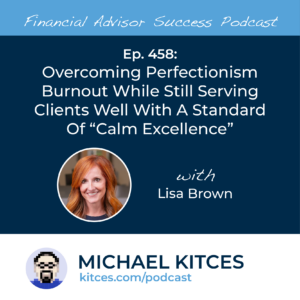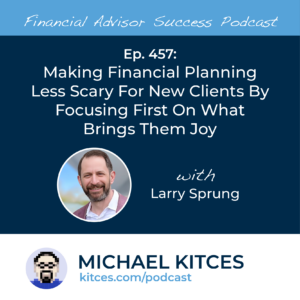Many advisory firm owners face a dilemma as they reach capacity: they know they need help with planning work and would like to hire an associate advisor, but they may be uncertain about what, exactly, to delegate. Since associate advisors rarely prospect or manage their own clients today, it can feel challenging for firm owners to envision what the associate would do full time that would provide a real return on investment. Without a clear delegation strategy, though, both the lead advisor and the associate both risk running into frustrations, inefficiencies, and missed opportunities for growth.
In this article, senior financial planning nerd Sydney Squires explores how small firms can accelerate ROI on associate advisors. The key is to delegate in ways that reduce the senior advisor's time spent per client. Doing so frees the lead advisor to focus on business development, deepen relationships with complex clients, or simply avoid burnout. Kitces Research finds that solo advisors typically spend about 20 hours per first-year client, but with support staff, that time can drop by 25%. Even if an associate takes longer to complete a task, the time saved for the lead advisor still translates to a net gain – especially when reinvested in higher-value activities. A partial delegation approach – where the associate owns tasks within clear review guardrails – helps manage risk while steadily building confidence and capability.
To facilitate this ramp-up, five functional areas stand out as ripe for early delegation: client onboarding, meeting preparation and recurring plan updates, post-meeting follow-up, incoming client requests, and firm-specific “advisor odds and ends”. Onboarding tasks like data entry, identifying insurance or planning gaps, and building preliminary recommendations help associates learn the firm's process while contributing meaningfully. Meeting prep and recurring plan maintenance tasks create repeatable opportunities to train on client strategy and support the advisor's client-facing time. Follow-up work – such as reviewing AI-generated notes, assigning action items, and drafting communications – further embeds the associate into the service model. Handling incoming client requests and CRM updates allows them to build judgment around common client needs, while owning certain 'miscellaneous' advisor tasks (like reviewing estate documents or tracking planning deadlines) frees up the lead advisor to focus on more strategic work.
Successful delegation, however, requires intentional structure. A phased model – progressing from observation, to guided work, to synchronous review, and eventually to asynchronous or conditional reviews – ensures that associates progress systematically, while the lead advisor retains appropriate oversight. When paired with clear benchmarks, this model supports learning and accountability, prevents premature autonomy, and keeps work consistently moving off the senior advisor's plate – all while building a confident, competent future advisor who is better prepared for advancement.
Ultimately, early-stage associate advisors don't need to be fully self-sufficient to generate ROI – they simply need opportunities to do meaningful work in a supervised, structured way. When lead advisors approach delegation as a tool to expand capacity – not as a demand for perfect execution – firms can begin seeing returns within months, not years. With a deliberate onboarding path and well-defined responsibilities, associate advisors can become an investment in sustainable firm growth!




